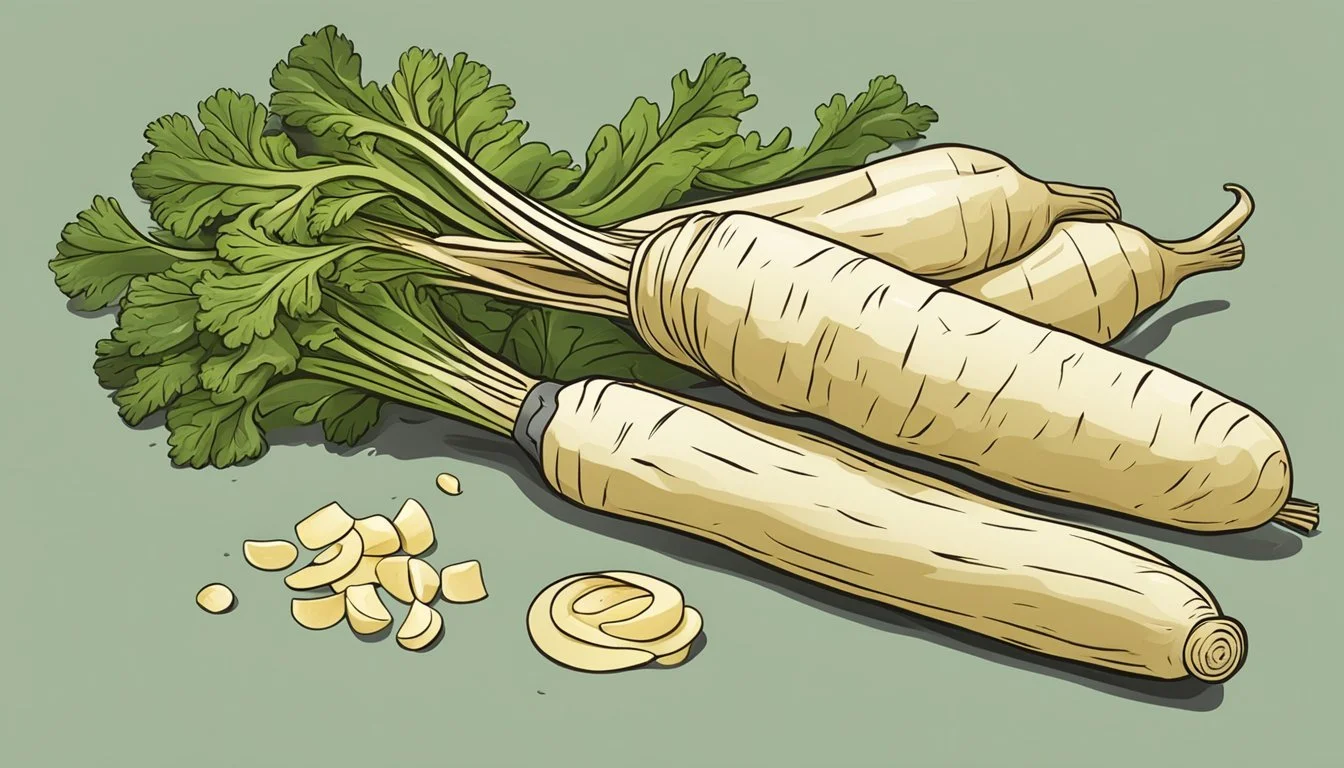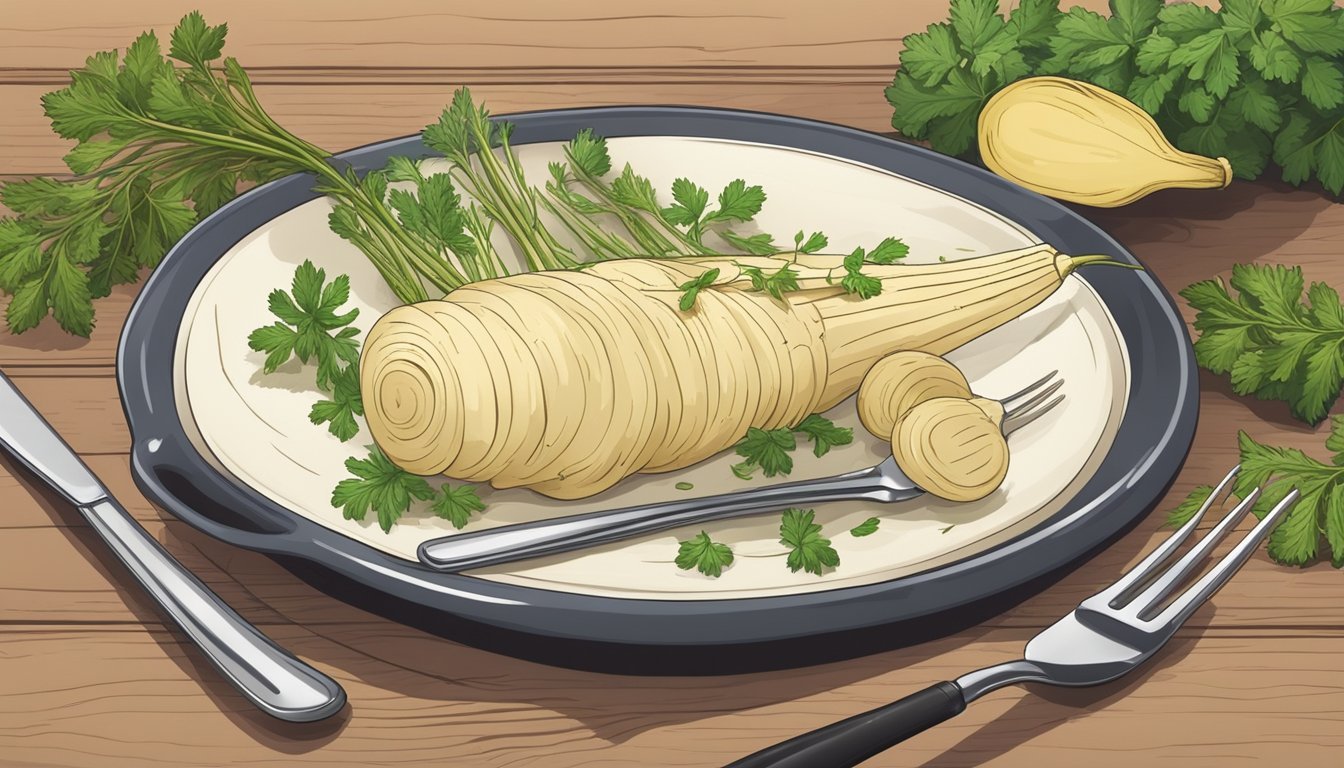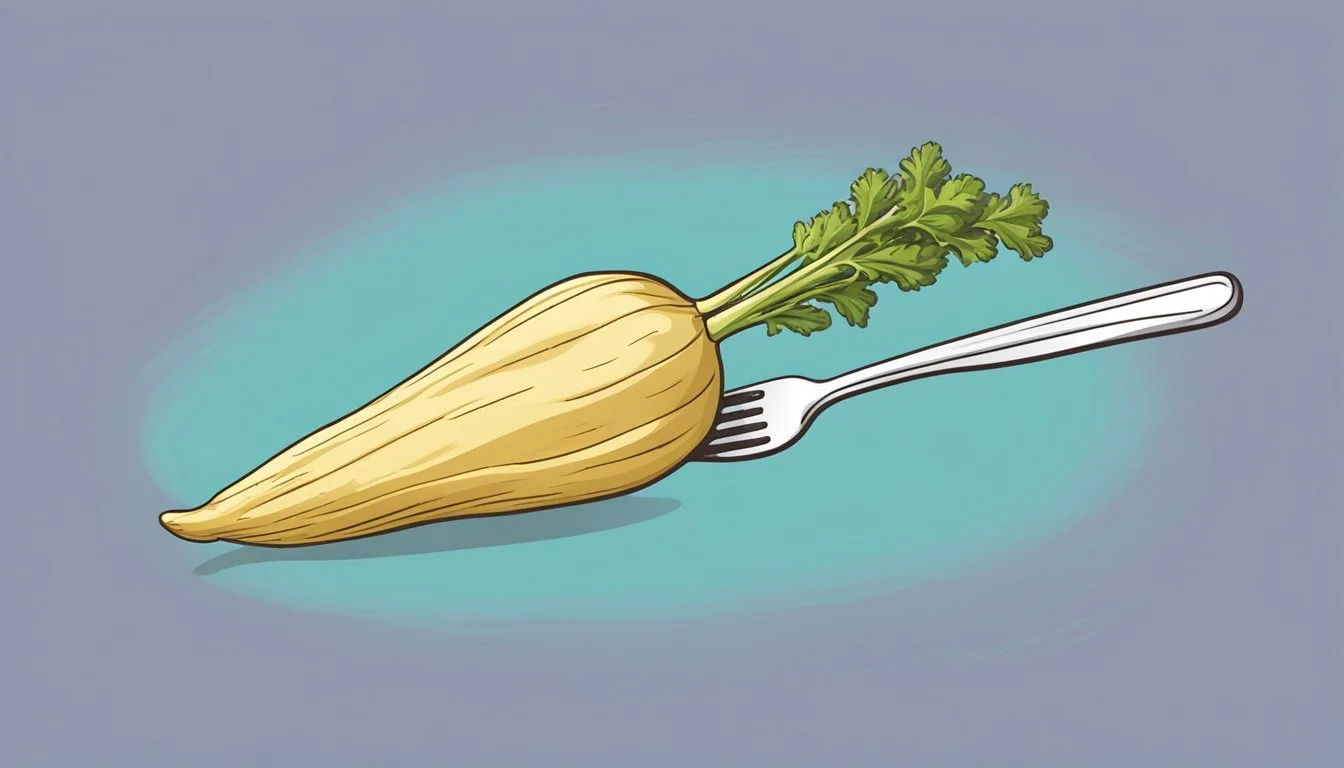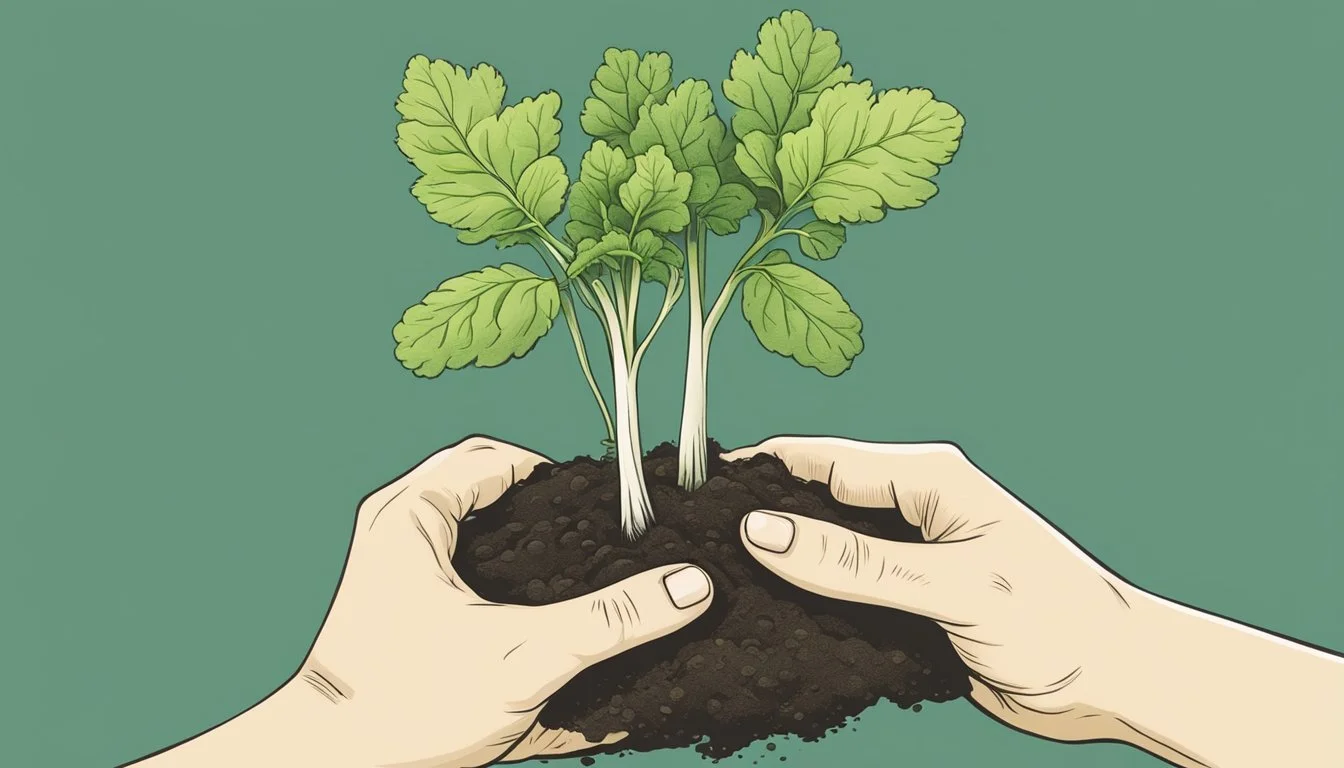How Do You Eat a Parsnip?
Simple Preparation and Cooking Tips
The parsnip, a root vegetable closely related to the carrot and parsley, is a versatile ingredient in the kitchen. Often recognized for its pale color and tapered shape, this vegetable boasts a sweet, earthy flavor especially when harvested after the first frost. Parsnips are not only a flavorful addition to meals but are also packed with nutrients, providing an excellent source of fiber, vitamins C and K, and folate. They can contribute to a well-rounded diet by promoting digestive health, enhancing the immune system, and can be beneficial for weight management due to their low calorie content.
Cooking parsnips is straightforward and there are a variety of methods to prepare them, making this vegetable a suitable choice for both novice cooks and culinary experts. Parsnips can be enjoyed in a myriad of recipes ranging from a simple, rustic mash to a savory roasted dish. To achieve a fork-tender consistency, they are typically peeled and chopped into pieces, and can then be boiled or steamed until soft. Roasting is another popular method which caramelizes the natural sugars in the parsnips, enhancing their sweetness and producing a delightful texture.
Incorporating parsnips into a meal not only enriches the flavor profile but also increases the nutritional value of the dish. They can seamlessly blend into soups and stews or serve as a nutritious side dish. Whether mashed, roasted, or even pureed into a creamy soup, the parsnip is a delicious and healthful choice that adapts well to a wide array of cooking styles and culinary preferences.
Nutritional Profile and Varieties of Parsnips
Parsnips are a highly nutritious root vegetable with a variety of types, notable for their health benefits, including a significant vitamin C content. They are a versatile ingredient in many recipes and contribute valuable nutrients to the diet.
Types of Parsnips
Parsnips come in several types, each with a distinct shape and size:
All-American: Thick and creamy-white, known for its sweet flavor.
Cobham Marrow: Tapered and smooth, with a sweet, nutty taste.
Gladiator: Popular for its resistance to canker and uniform shape.
Harris Model: A classic heirloom variety with a long, sweet root.
Health Benefits
Parsnips boast an impressive array of health benefits:
Fiber: A great source of dietary fiber for digestive health.
Minerals: Contains magnesium and calcium, which are vital for bone health.
Vitamins: Offers a range of vitamins, including folate and vitamins E and K.
Vitamin C Content
Vitamin C is an essential nutrient, and parsnips are a good source:
Half-cup serving: Provides roughly 17 milligrams of vitamin C.
Daily Intake: This amount represents about 28% of the average daily recommended intake (DRI) for vitamin C.
Nutritionally, parsnips contribute effectively to one's intake of vitamin C, alongside other root vegetables, which are important for supporting immune function and skin health.
Selecting and Storing Parsnips
Parsnips, a nutritious root vegetable, should be chosen for their size and texture, and stored properly to maintain freshness. The harvesting season, characteristics of good quality parsnips, and storage conditions are paramount for the best eating experience.
Season and Harvesting
Parsnips are typically harvested in the fall and can be found in stores throughout the winter. They benefit from the frost, which converts their starches into sugars and enhances their sweet flavor. Ideally, parsnips are pulled from the ground after the first frost in autumn and can continue to be harvested through early spring.
Choosing the Right Size and Texture
When selecting parsnips, look for:
Size: Medium-sized parsnips, which are generally sweeter and more flavorful than overly large ones.
Texture: Firm and smooth; they should feel dense for their size. Avoid parsnips that are notably soft, limp, or shriveled.
Storage Tips
To keep parsnips fresh:
Fridge: Store them unwashed in a plastic bag with air holes or wrapped in a paper towel, then placed in the vegetable crisper of a fridge for 2 to 3 weeks.
Cool, Dark Place: Without a fridge, a basement or garage can be suitable alternatives, as long as it maintains a temperature between 32°F to 40°F and has high humidity.
Freezing: For long-term preservation, one can freeze parsnips. First, wash and peel them, dice into 1-inch cubes, blanch for 2 minutes, and then cool immediately in ice water before freezing.
It's important for farmers to store parsnips in conditions that prevent them from becoming limp or sprouting, which means avoiding warm temperatures and exposure to sunlight.
Preparation Basics
Before cooking parsnips, one should ensure they are properly prepared, which includes thorough cleaning and peeling. The initial prep work is crucial for the best taste and texture.
Cleaning and Peeling
Parsnips should be washed under cool water and scrubbed with a vegetable brush to remove any dirt or debris. Their skin is edible but can sometimes be tough, so most recipes call for them to be peeled. It is especially important to peel larger parsnips, as their skin can be more fibrous. One should use a vegetable peeler to remove the skin and then rinse the parsnips again.
Wash: Run under cool water and scrub.
Peel: Use a vegetable peeler, particularly for larger, more fibrous parsnips.
To Cut or Not to Cut
Once the parsnips are cleaned and peeled, they can be left whole or cut, depending on the cooking method chosen. For mashing or pureeing, one can cook them whole and then chop or mash after cooking. But for roasting, sautéing, or steaming, they should be cut into even sizes to ensure uniform cooking.
Whole: Suitable for boiling and mashing.
Cut: Even pieces for methods like roasting or steaming. Some thicker parsnips may have a woody core, which should be removed.
As a precaution: When cutting parsnips, they should be stable on the cutting board to avoid slipping. Small parsnips might not need to have the core removed, as it isn’t as developed and is not as tough as in larger ones.
Cooking Methods
In preparing parsnips, versatile cooking methods bring out their natural sweetness and tender texture. Each method offers a variety of flavors and serves diverse palates.
Boiling and Mashing
Boiling parsnips softens them for mashing, a process similar to preparing mashed potatoes. One begins by cutting the parsnips into even chunks and boiling them in water until fork-tender. After draining, the parsnips can be mashed with milk and butter, resulting in a smooth, creamy side dish.
Roasting
For a caramelized flavor, roasting parsnips is an excellent choice. One coats the chopped parsnips with olive oil and seasons them with salt and pepper. They are then spread on a baking sheet and roasted in a preheated oven at 425°F until golden brown and tender, taking about 30 to 40 minutes.
Baking
Baking whole parsnips after a thorough cleaning and light seasoning allows them to cook evenly while retaining nutrients and moisture. Baked parsnips can be served as a side, blended into soups, or pureed for a nutritious addition to various dishes.
Stewing
Stewing involves simmering parsnips in liquids like broths or stews, which allows them to absorb rich flavors. Cut into bite-sized pieces, they can be added to a stew with other root vegetables and simmered until soft, augmenting the stew's overall heartiness.
Sautéing
Sautéing quickly cooks parsnips in a saucepan with a small amount of oil or butter. It's ideal for achieving a slightly crispy yet tender texture. Parsnips are often sliced or diced and then sautéed over medium heat until they're golden brown, which typically takes only a few minutes.
Enhancing Parsnip Dishes
Optimizing the flavor of parsnips in dishes hinges on careful selection of seasonings, complementary vegetables, and the judicious use of fats and acids to balance and elevate the natural sweetness of parsnips.
Seasonings and Spices
Rich and earthy spices work well with parsnips. Adding salt and pepper is fundamental for bringing out their natural sweetness. Incorporating herbs like rosemary and thyme can infuse parsnips with aromatic depth. Here is a suggested blend for seasoning parsnips:
1 tsp salt
1/2 tsp black pepper
1 tsp chopped fresh rosemary
1/2 tsp dried thyme
Combining Vegetables
Parsnips pair wonderfully with an array of vegetables. Roasting parsnips with carrots (how long do carrots last?), brussels sprouts (how long do brussels sprouts last?), sweet potatoes, and squash creates a harmonious blend of flavors and textures. Try this combination for a vibrant side dish:
2 parsnips, peeled and chopped
2 carrots, peeled and chopped
1 cup brussels sprouts, halved
1 sweet potato, peeled and cubed
1 cup butternut squash, peeled and cubed
Using Fats and Acids
Using the right fats can turn parsnips into a decadent experience. Butter adds a creamy richness, while olive oil is ideal for a lighter preparation. For a bright finishing touch, a splash of lemon juice or a drizzle of cream can provide the perfect acidic counterpoint to the sweetness of the vegetables. Here are two quick enhancements for parsnips:
Toss with olive oil before roasting to achieve a golden texture
Finish with a tablespoon of butter and a teaspoon of lemon juice for added richness and zest
Recipes and Serving Suggestions
Parsnips are a versatile root vegetable that can elevate a variety of dishes with their natural sweetness and rich flavor profile. They can be transformed into hearty soups, served as scrumptious side dishes, or take center stage as the main ingredient in a meal.
Parsnip Soups and Stews
A bowl of parsnip soup offers a comforting and nutritious option. Common ingredients include onions and herbs which enhance the parsnip's sweet taste. They can make a creamy soup on their own or be combined with other vegetables like carrots for a more complex flavor. Bacon and basil oil are sometimes added for additional depth of taste. Parsnip stews may include a combination of other root vegetables and are usually seasoned to bring out the natural sugars of the parsnips, giving the stew a hearty and sweet undertone.
Side Dishes
Parsnip mash is a popular alternative to mashed potatoes, often seasoned with salt, pepper, and a touch of honey to highlight the sweetness. Parsnips also excel in baked side dishes such as gratins, where they're thinly sliced and layered with cream and cheese before baking until golden brown. Another simple, yet delightful side dish is oven roasted carrots and parsnips; seasoned and spread in a single layer to roast, they caramelize at the edges, providing a perfect blend of the vegetables' natural sugars and savory notes.
Parsnip as a Main Ingredient
Parsnips can be the star in recipes where their distinct flavor is celebrated. For instance, they can be cut into strips and baked or fried to make parsnip fries — a healthier alternative to traditional french fries. Incorporating parsnips in latkes presents them as a primary element, mixing their sweetness with a crispy texture. They can also be shredded into a salad to add a crisp, sweet contrast to the greens and garnishes like parsley. When preparing parsnips as the main ingredient, their unique flavor profile invites creativity and bold pairings.
Special Considerations
When incorporating parsnips into one's diet, it's important to be mindful of potential allergens and dietary restrictions. Parsnips may not be suitable for everyone, so understanding these aspects can ensure a safe and enjoyable consumption for all individuals interested.
Common Allergens and Interactions
Parsnips belong to the Apiaceae family, which includes vegetables like carrots and celery. People with allergies to other members of this family might experience similar reactions to parsnips. Reactions can range from mild oral itchiness to more severe responses requiring medical attention. There is also a concern with wild parsnips, as they contain compounds that can cause skin irritation upon contact, especially when exposed to sunlight.
Parsnips in Dietary Restrictions
Parsnips are generally acceptable in most dietary plans due to their nutrient profile. They are a rich source of fiber and nutrients, and they are low in calories. However, individuals adhering to a low-carbohydrate or ketogenic diet may need to limit their intake, as parsnips contain a higher amount of carbs compared to other vegetables. Moreover, for people with specific health conditions that require moderated fiber or vitamin K levels, monitoring parsnip consumption is prudent.
Tips for Growing Parsnips
Growing parsnips can be a rewarding experience for farmers as they yield delicious root vegetables that can be harvested and enjoyed throughout the fall and winter. This section offers specific guidance on soil and climate conditions favorable for parsnips, as well as best practices for seed selection and planting.
Soil and Climate Requirements
Parsnip cultivation thrives in moderate climates, where temperatures range between 40˚F and 70˚F. These root vegetables favor soil that is well-drained and rich in organic matter. For optimal growth, soil should be loose and deep to allow the parsnip roots to expand. Preparing the soil by removing rocks and breaking up clumps will facilitate better root formation. It is crucial that farmers ensure that the chosen site receives full sunlight.
Seed Selection and Planting
When selecting seeds, it is important for one to choose high-quality seeds from reputable sources. To encourage germination, seeds should be sown directly in the garden at a depth of 1/2 inch and spaced about 1 inch apart.
Planting Guide:
Depth: 1/2 inch
Spacing: 1 inch apart
Rows: 18 to 24 inches apart
Incorporate companion planting by sowing radish seeds between the parsnip seeds. The radishes will act as a marker and assist the slower-germinating parsnips by breaking the soil's crust. Once the parsnips germinate, farmers should thin the seedlings to at least 6 inches apart to allow enough space for their growth.
Historical and Cultural Context
Parsnips have been a staple in various cuisines and agricultural practices throughout history. This section explores their culinary journey and their significance in agriculture.
Parsnips in Cuisine
Parsnips are a root vegetable with a lineage that traces back to Roman times, where they were a part of the diet and, at times, used as a form of tribute. Notably distinct from the carrot, parsnips possess a cream-colored tuberous root with a sweet taste, especially after frost. In historical cuisine, before the widespread use of sugar, they were often utilized as a sweetener in cakes, breads, and jams.
Their versatility in the kitchen is reflected in traditional and contemporary dishes alike. Parsnips can be roasted, boiled, mashed, or used in stews and soups, offering a slightly sweet and earthy flavor that is quite distinct from their relative, the carrot.
Agricultural Significance
Agriculturally, parsnips are biennial plants, typically grown as annuals for their edible roots. Sowing of parsnip seed occurs in spring, with the plants thinned to maintain adequate spacing for proper growth. An interesting aspect of parsnip cultivation is the transformation of starches into sugars during periods of low temperature, which enriches their flavor. This characteristic is a key factor in the timing of the harvest, with many growers opting to leave the roots in the ground through winter to enhance their sweetness.
The long history of parsnips in agriculture shows their adaptability and resilience, having been utilized not only for human consumption but also as valuable livestock feed, diversifying the scope of their cultural and economic significance.
Frequently Asked Questions
Parsnips can be consumed in various ways, and knowing how to select and introduce them is key to enjoying their sweet, earthy flavor and rich texture.
Can Parsnips Be Eaten Raw?
Yes, they can be eaten raw. When thinly sliced or shredded, raw parsnips have a crisp texture and a sweet, slightly nutty flavor that makes them a fresh addition to salads. To enhance their taste, they can be combined with dressings or fresh herbs.
How to Determine Parsnip Freshness?
One can determine the freshness of a parsnip by inspecting its texture and appearance. A fresh parsnip will be firm to the touch and have smooth, blemish-free skin. The color should be a consistent creamy white. Any signs of soft spots, wrinkles, or sprouting can indicate the parsnip is past its prime.
Best Way to Introduce Parsnips to Kids?
Introducing parsnips to kids works best by pairing them with familiar flavors and presenting them in a fun, appealing way. Roasting parsnips brings out their natural sweetness, making them more palatable for children. Try cutting them into fun shapes, and serving them with a dip or mixed with other colorful roasted root vegetables.
Conclusion
Parsnips, with their distinctive nutty flavor, stand as a versatile root vegetable in the culinary world, particularly during the fall and winter seasons. They can be prepared through various methods, but one of the most popular is roasting, which enhances their natural sweetness.
When one chooses to roast parsnips, they not only embrace a method that highlights the root's flavor but also engage in an easy and efficient cooking process. Roasting at a high temperature, typically around 425°F (220°C) for 20 to 25 minutes, can caramelize the sugars within the parsnips and create a tender bite with a slightly crispy exterior.
For consumers seeking a nutritious option, parsnips offer a wealth of benefits. They are a low-calorie choice with a high fiber content, more than what is found in comparative vegetables like turnips. Moreover, they are a good source of vitamins and minerals, such as vitamin K, vitamin C, and folate.
In conclusion, parsnips provide a healthful addition to one's diet and are capable of delivering a satisfying nutty flavor to the dinner table. Their adaptability in preparation methods, coupled with their nutritional value, make them a commendable choice for seasonal dishes during the colder months.









